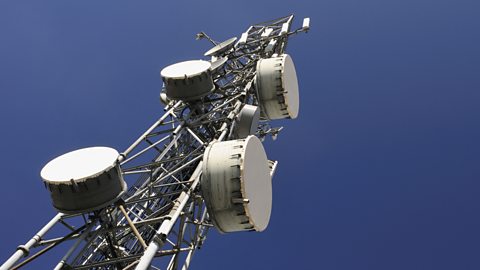Mobile phones
Mobile phones work by sending and receiving low powered radio waves.

The radio waves are sent to, and received from, a mast or aerial, called a mobile phone base station.
The base station passes the signal/call into the landline network or on to the mast nearest the mobile phone the call is being made to.
Each mobile phone base station covers an area known as a cell.
Cells are aligned next to each other in a similar pattern to a honeycomb, and it is for this reason that mobile phone networks are sometimes referred to as cellular networks.
The phone masts can act as repeater stations, passing the call from mobile phone A to mobile phone B.
Base station transmitters/receivers are often positioned high up, often on tall radio masts.
They cannot be spaced so far apart that hills, tall buildings or the curvature of the Earth stop the beam.
Microwaves are used to send signals to and from satellites.
The satellites can relay signals around the Earth.
Microwaves are used because they can pass through the Earth’s atmosphere and can travel through the vacuum of space.
The signals may be for television programmes, long distance telephone conversations, weather forecasting or spying.
Radio waves are not used to send signals to satellites as they are reflected by the Earth’s atmosphere and do not penetrate out into space and so would not reach the satellite.